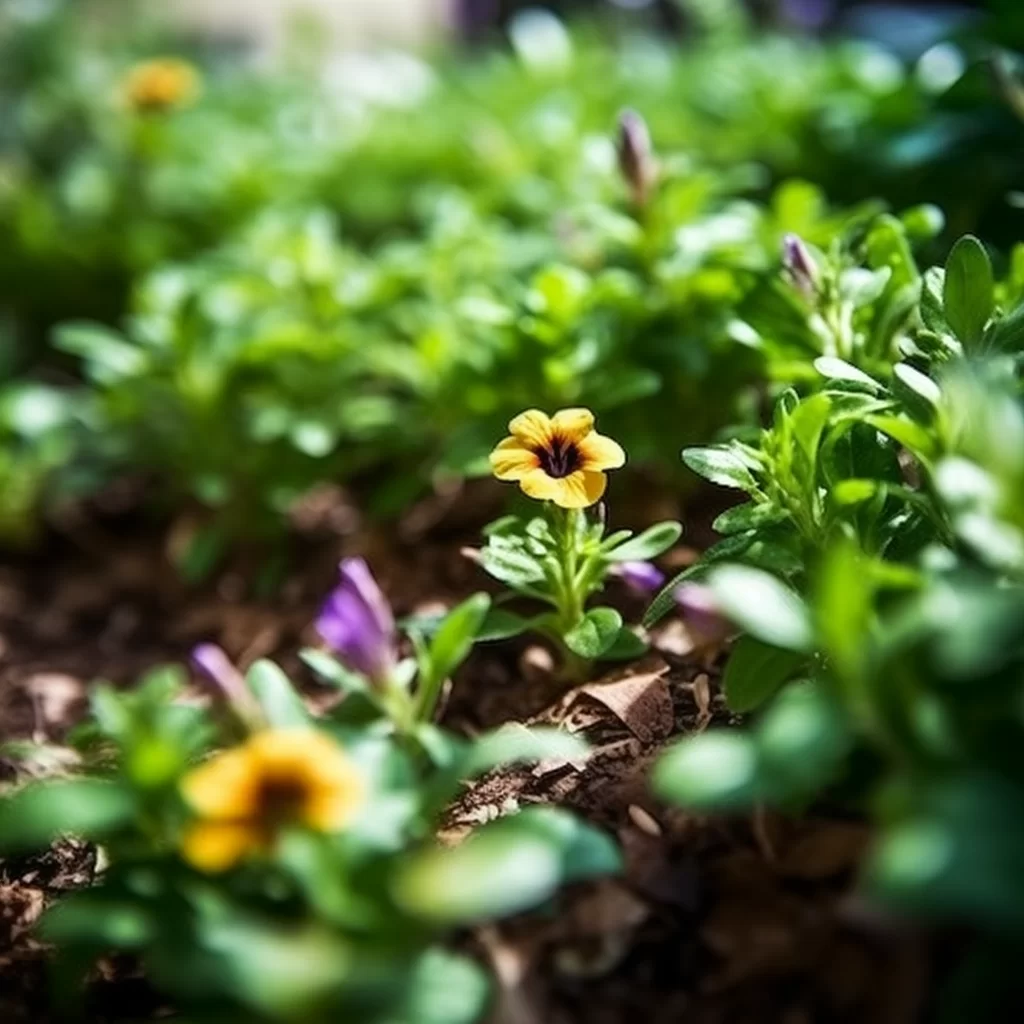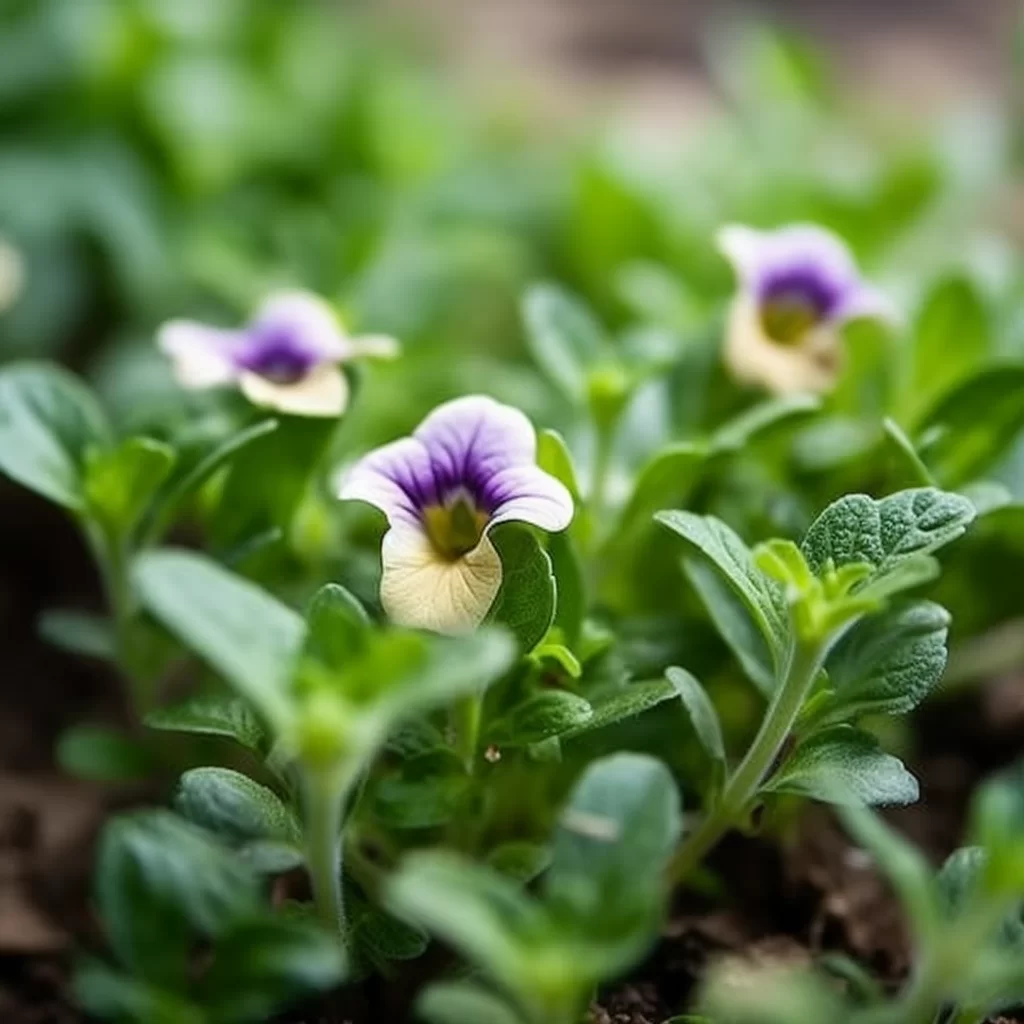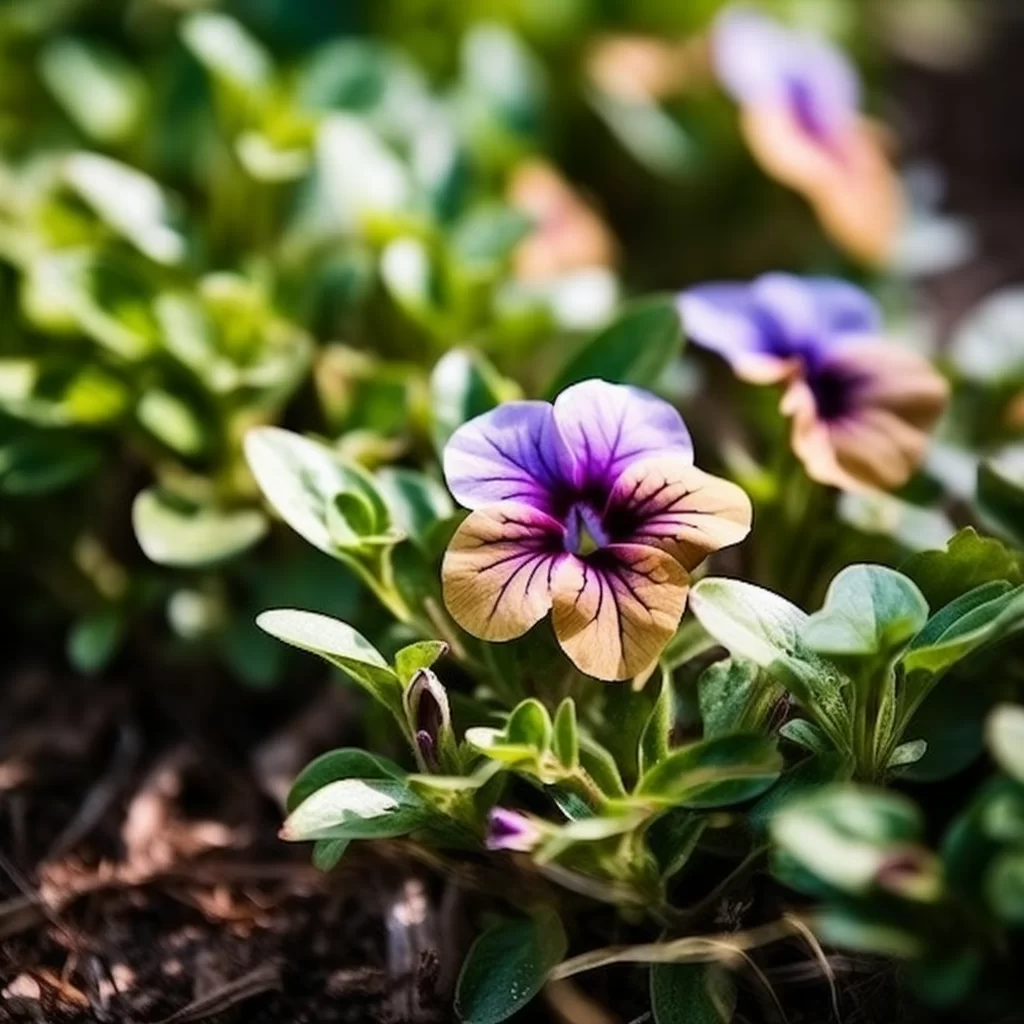Story of Day :
Contents
The Complete Guide to Calibrachoa Plant Care: Tips and Tricks
If you’re looking for a plant that adds a pop of color to your garden and lasts long, Calibrachoa is a perfect option.
With its bright and vivid hues, it’s no surprise that Million Bells are beloved by gardeners worldwide.
But wait, what if you’re new to gardening or don’t have green thumbs? Don’t worry – we’ve got you covered! In this guide, we’ll provide all the information you need to take care of these stunning plants.
Firstly, Calibrachoa plants love sunlight and thrive in well-draining soil.
They require consistent watering but be sure not to overwater them as they don’t like soggy roots.
Additionally, deadheading spent blooms encourages new growth and prolongs blooming periods.
With proper care and attention, Calibrachoa can bloom from spring until fall! Whether planted in pots or hanging baskets or added to your flower beds – these charming flowers will give any space an instant facelift with their vibrant colors and long-lasting beauty.
What is a Calibrachoa Plant?
Calibrachoas are beautiful and vibrant annual plants that belong to the Solanaceae family.
Originating from South America, these plants were introduced to Europe for the first time in the 1990s and have since become a popular choice among gardeners.
One of the most attractive features of Calibrachoas is their small petunia-like flowers which come in a diverse range of colors such as pink, purple, red, yellow and orange.
These cheerful blooms make them an ideal plant for brightening up any outdoor space. In addition to being visually appealing, Calibrachoas are also relatively easy to care for.
In addition to being visually appealing, Calibrachoas are also relatively easy to care for.
They require moderate watering and can thrive in both full sun or partial shade conditions making them versatile plants suitable for many different environments.
Additionally, their ability to self-clean means that they don’t need deadheading which further simplifies their maintenance requirements.
With all these benefits combined with their stunning appearance it’s no wonder why Calibrachoas are increasingly becoming a popular choice among gardeners worldwide!
Where Should You Plant Your Calibrachoa?
Calibrachoa plants thrive when they are exposed to full sun for most of the day.
However, if you’re unable to provide that much sunlight, don’t worry.
These plants can also grow in partial shade without any issues.
Just make sure you choose a spot with well-draining soil that’s not too heavy or compacted.
Additionally, ensure that the soil has good organic matter content to keep your calibrachoa plant healthy and happy.To guarantee your calibrachoa plant thrives, it’s essential to choose the right location for it.
Ideally, find somewhere where it can soak up all the sun rays possible – this will facilitate its growth and blooming capacity significantly! You can also place them in partial shade if necessary without affecting their development too much.
However, keep in mind that choosing suitable soil is equally crucial – aim for well-draining soils with enough organic matter content but not too compact or heavy as these conditions could harm your plant’s root system and stunt its growth over time!
When it comes to writing, lists can be a helpful tool for organizing thoughts and information.
Lists can help break down complex ideas into manageable pieces, making them easier to understand.
Additionally, lists can be particularly useful when conveying information that needs to be concise and easily digestible. However, it’s important to use lists strategically and not overuse them.
However, it’s important to use lists strategically and not overuse them.
Too many lists in a piece of writing can make it feel choppy or disjointed.
Instead, consider using other methods of organization such as headings or paragraphs when appropriate.
When used thoughtfully, lists can enhance the clarity and readability of your writing.
Calibrachoa plants, also known as Million Bells, are a popular choice for hanging baskets and container gardens due to their profuse blooming and trailing habit.
To care for these plants, it is important to plant them in well-draining soil, preferably with some organic matter mixed in.
Watering should be done regularly to keep the soil moist but not waterlogged.
Deadheading spent flowers will encourage more blooms and prevent the plant from going to seed prematurely.
Fertilizing with a balanced fertilizer every two weeks can also aid in continuous blooming throughout the growing season.In terms of pest control, calibrachoa plants are susceptible to spider mites and aphids.
Regular monitoring of the plants can help detect any infestations early on before they become severe.
A strong spray of water can often help dislodge pests from the leaves or stems of the plant.
If chemical control is necessary, choose an insecticide labeled for use on ornamental plants and always follow the instructions carefully.Overall, proper care for calibrachoa includes providing adequate sunlight (at least 6 hours a day), regular watering and fertilizing along with monitoring for pests or diseases that may arise throughout their life cycle.
With these simple steps taken into consideration during cultivation your Calibrachoa Plants will thrive beautifully! When it comes to writing, lists can be a helpful tool for organizing thoughts and information.
When it comes to writing, lists can be a helpful tool for organizing thoughts and information.
Lists can help break down complex ideas into manageable pieces, making them easier to understand.
Additionally, lists can be particularly useful when conveying information that needs to be concise and easily digestible.However, it’s important to use lists strategically and not overuse them.
Too many lists in a piece of writing can make it feel choppy or disjointed.
Instead, consider using other methods of organization such as headings or paragraphs when appropriate.
When used thoughtfully, lists can enhance the clarity and readability of your writing.
Calirbachoas need regular watering but overwatering should be avoided at all cost because waterlogging could cause root rot and other fungal issues.
Water them when the top inch of soil feels dry to the touch.
Calibrachoa plants need regular fertilization to keep blooming all season long.
You can use a balanced 10-10-10 fertilizer once every two weeks or a slow-release granular fertilizer at the beginning of the season.
Remove spent flowers from your calibrachoa plants as soon as they start to fade, this will encourage new growth and more blooms!
Aphids, spider mites, whiteflies, thrips are common pest that you may encounter with Calibrachoas.
Proper monitoring is needed so that an infestation can be tackled early before it spreads widely.
One disease that affects calibrachoa plants quite often is Phytophthora root rot.
This condition arises due to either waterlogging soil or inadequate drainage systems.
When the plant begins to get affected, its leaves start turning brown or yellow and begin to wilt, which is then followed by damage to the roots.
The primary cause of this disease is an excessive amount of moisture in the soil, which allows the fungus Phytophthora to thrive and infect plant roots.To prevent this disease from affecting your calibrachoa plants, you must ensure that you are watering them correctly and have a proper drainage system in place.
Additionally, it would be wise not to overwater your plants as well since their roots can quickly become waterlogged if there’s too much moisture present in the soil for an extended period of time.
By taking these preventative measures, you can help reduce the chances of Phytophthora root rot affecting your Calibrachoa plants so they can continue thriving and looking beautiful all year round!
When it comes to writing, lists can be a helpful tool for organizing thoughts and information.
Lists can help break down complex ideas into manageable pieces, making them easier to understand.
Additionally, lists can be particularly useful when conveying information that needs to be concise and easily digestible. However, it’s important to use lists strategically and not overuse them.
However, it’s important to use lists strategically and not overuse them.
Too many lists in a piece of writing can make it feel choppy or disjointed.
Instead, consider using other methods of organization such as headings or paragraphs when appropriate.
When used thoughtfully, lists can enhance the clarity and readability of your writing.Some tips on how to prevent root rot:
Tips for Growing Calibrachoas
When it comes to writing, lists can be a helpful tool for organizing thoughts and information.
Lists can help break down complex ideas into manageable pieces, making them easier to understand.
Additionally, lists can be particularly useful when conveying information that needs to be concise and easily digestible.However, it’s important to use lists strategically and not overuse them.
Too many lists in a piece of writing can make it feel choppy or disjointed.
Instead, consider using other methods of organization such as headings or paragraphs when appropriate.
When used thoughtfully, lists can enhance the clarity and readability of your writing.If you want to keep your garden looking fresh and vibrant, one simple trick is to snap off dead flowers regularly.
Dead flowers can make the surrounding area look unkempt and uninviting, so it’s important to remove them as soon as possible.
But that’s not the only reason why you should do this.
By snapping off dead flowers, you’re also encouraging more growth from your plants.
This is because when a flower dies, the plant channels its energy into creating new blooms instead of trying to sustain a dying one.
So if you want your garden to bloom with beautiful colors throughout the growing period, make sure to regularly snap off any wilted or dead flowers.It may seem like a small act, but snapping off dead flowers can have a big impact on your garden’s overall health and appearance.
By removing these unsightly blooms, you’ll be helping your plants focus on producing new growth instead of wasting energy on dying ones.
Additionally, removing dead flowers often means removing any potential disease before it spreads further onto healthy parts of the plant or other neighboring plants in close proximity.
So if you’re looking for an easy way to keep your garden looking fresh while also promoting more growth and preventing disease spread- try snapping off those lifeless blossoms on a regular basis!One tip for keeping your plants healthy and disease-free during irrigation is to avoid getting water on their foliage.
This is particularly important when it comes to preventing diseases like powdery mildew, which can leave a white, powdery coating on leaves and ultimately weaken or kill the plant.
By directing water at the base of the plant rather than spraying it over the top, you can minimize the risk of fungal spores settling on leaves and taking hold.
Additionally, watering in the morning or early afternoon can help any excess moisture evaporate before evening when cooler temperatures and higher humidity create ideal conditions for fungal growth.When it comes to maintaining a thriving garden or landscape, attention to detail is key – even small actions like adjusting your irrigation technique can make a big difference in promoting plant health.
By focusing on drip or targeted watering methods that keep water off foliage whenever possible, you’ll not only reduce your risk of diseases like powdery mildew but also conserve water by minimizing runoff.
So next time you reach for your hose or sprinkler system, consider adjusting your approach to give those plants an extra layer of protection against common ailments that could otherwise spoil all your hard work!
If your Calibrachoa starts to look leggy, it’s time to give it a haircut.
Cut back up to one-third of the plant’s height along with spent flowers and this will encourage bushier growth.
Calibrachoas may not survive winter so it may be necessary to grow them as annuals or move the containers inside during cold months.
Conclusion
If you’re looking for a simple and effective way to add some flair to your garden, consider growing calibrachoa plants.
Not only are they incredibly easy to cultivate, but they also produce stunning blooms that will brighten up your outdoor space all season long.
With just a few simple tips for planting and caring for these annual plants, you can make sure that they continue thriving from the moment you put them in the ground until the first frost of autumn.The secret to successfully growing calibrachoas lies in making sure that they receive proper care throughout their lifecycle.
This means ensuring that they’re planted in well-draining soil with plenty of sunlight and water, regularly fertilizing them with a nutrient-rich soil, and deadheading any spent flowers as soon as possible.
By following these basic steps, you’ll be able to enjoy an abundance of beautiful blooms all season long – making your garden truly stand out from the rest!